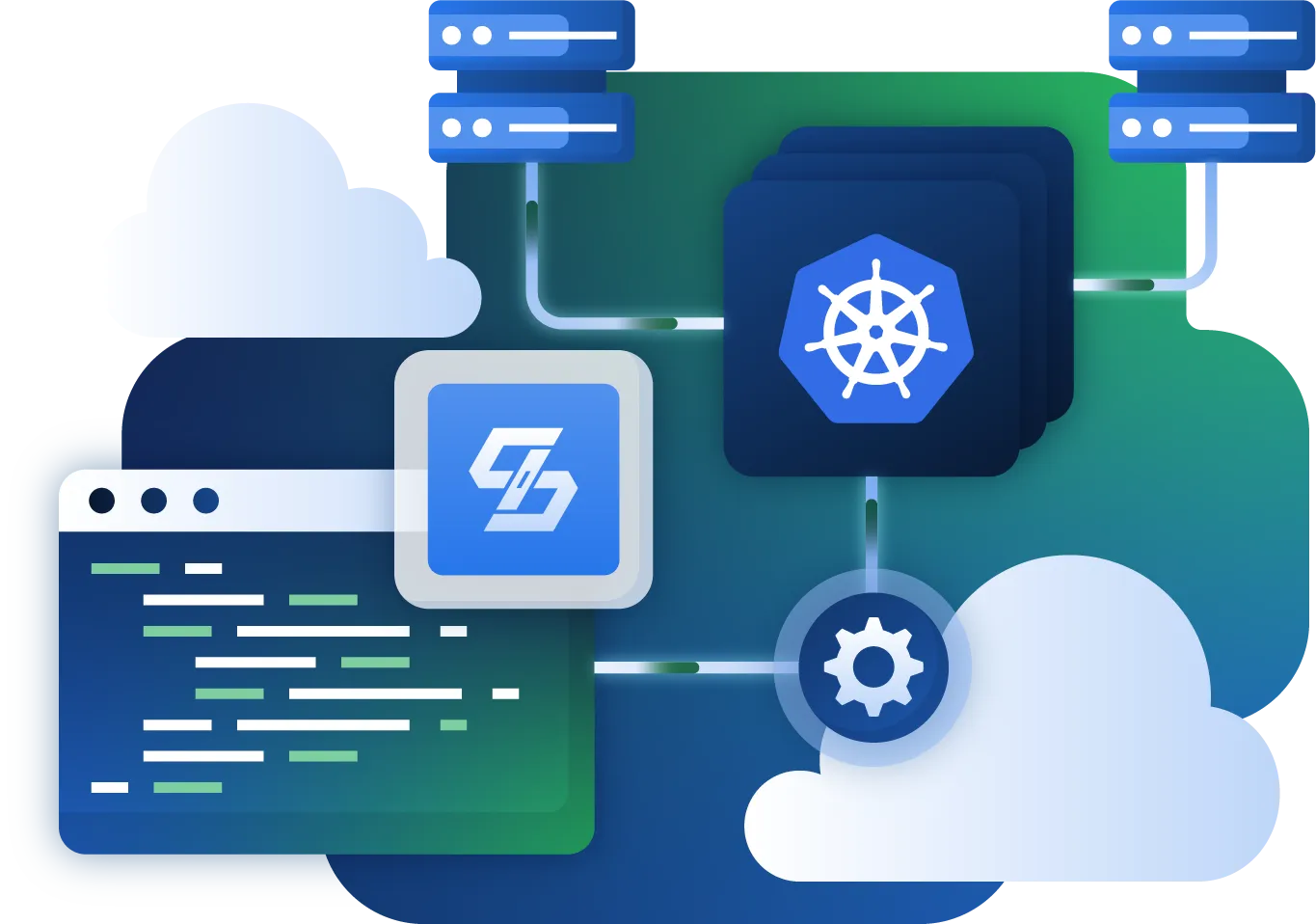Persistent Storage for Kubernetes
Powering Stateful Workloads with Simplyblock's Software-Defined Storage
Kubernetes has transformed the way organizations build and scale modern applications. But persistent storage remains one of its biggest challenges — especially when stateful workloads demand speed, scalability, and simplicity.
Simplyblock is designed from the ground up for Kubernetes, Simplyblock provides high-performance, software-defined block storage that turns your cluster into a true foundation for enterprise-grade, stateful applications.

Built for Kubernetes from Day One
Smoothly Scalable
Persistent volumes that scale with your workloads
Seamlessly Integrated
Snapshots, clones, and volume expansion via native Kubernetes APIs
Fully Automated
Instant provisioning and deprovisioning the Kubernetes-way
The True Kubernetes Storage
Why Simplyblock Is the Storage Platform Kubernetes Deserves
Simplyblock is unified, adaptive, fast. Just like Kubernetes itself.
At the core of simplyblock lies our MAUS Architecture — Modular, Adaptive, Unified, Shared-Everything.
It’s the reason we outperform legacy solutions and traditional SDS platforms.
With simplyblock, it doesn’t matter where you operate your Kubernetes, because it brings hyperscaler-level storage capabilities to your Kubernetes cluster. Whether on bare metal or virtualized environments, Simplyblock’s Proxmox VE integration brings Kubernetes clusters hyperscaler-grade storage flexibility.
Unified Storage Pool
Abstracts NVMe, SSD, HDD, and object storage behind a single, logical NVMe interface.
Flexible Deployment Model
Deploys hyper-converged, disaggregated, or in a hybrid model, offering the best performance for your workloads.
Near-Local Performance
Uses NVMe over Fabrics to ensure ultra-low latency—even for remote volumes.
Seamless Integration
Integrates with its own CSI driver for seamless workflows in a Kubernetes-native fashion.
Day-2 Operations: All Batteries Included
For platform engineers and DevOps teams, simplyblock makes daily operations easier:
Multi-Tenant and QoS
Multi-tenant support with isolated storage per namespace or project
Kubernetes-Native
Dynamic provisioning and resizing of volumes via Kubernetes
Always-On Storage Cluster
No downtime for cluster upgrades, extensions, or expansions
Self-Optimizing
Self-balancing storage engine for optimal performance
The Simplyblock Difference
| Simplyblock | Traditional SDS | Details | |
|---|---|---|---|
| NVMe-oF Support |
|
| Traditional SDS solutions often miss or limit the NVMe over Fabrics support |
| Kubernetes-Native CSI Driver |
|
| Traditional SDS solutions either provide a functionality-limited or no CSI driver |
| Snapshot & Clone Performance |
|
| Traditional SDS solutions often provide slow or storage heavy snapshotting and cloning |
| Erasure Coding |
|
| Traditional SDS solutions typically employ storage-heavy replication / mirroring |
| Deployment Flexibility |
|
| Traditional SDS solutions are typically limited in their deployment options |
| NVMe-oF Support | |
|
Simplyblock
|
|
| Traditional SDS solutions often miss or limit the NVMe over Fabrics support | |
| Kubernetes-Native CSI Driver | |
|
Simplyblock
|
|
| Traditional SDS solutions either provide a functionality-limited or no CSI driver | |
| Snapshot & Clone Performance | |
|
Simplyblock
|
|
| Traditional SDS solutions often provide slow or storage heavy snapshotting and cloning | |
| Erasure Coding | |
|
Simplyblock
|
|
| Traditional SDS solutions typically employ storage-heavy replication / mirroring | |
| Deployment Flexibility | |
|
Simplyblock
|
|
| Traditional SDS solutions are typically limited in their deployment options | |
| Simplyblock | Traditional SDS | Details | |
|---|---|---|---|
| NVMe-oF Support |
|
| Traditional SDS solutions often miss or limit the NVMe over Fabrics support |
| Kubernetes-Native CSI Driver |
|
| Traditional SDS solutions either provide a functionality-limited or no CSI driver |
| Snapshot & Clone Performance |
|
| Traditional SDS solutions often provide slow or storage heavy snapshotting and cloning |
| Erasure Coding |
|
| Traditional SDS solutions typically employ storage-heavy replication / mirroring |
| Deployment Flexibility |
|
| Traditional SDS solutions are typically limited in their deployment options |
